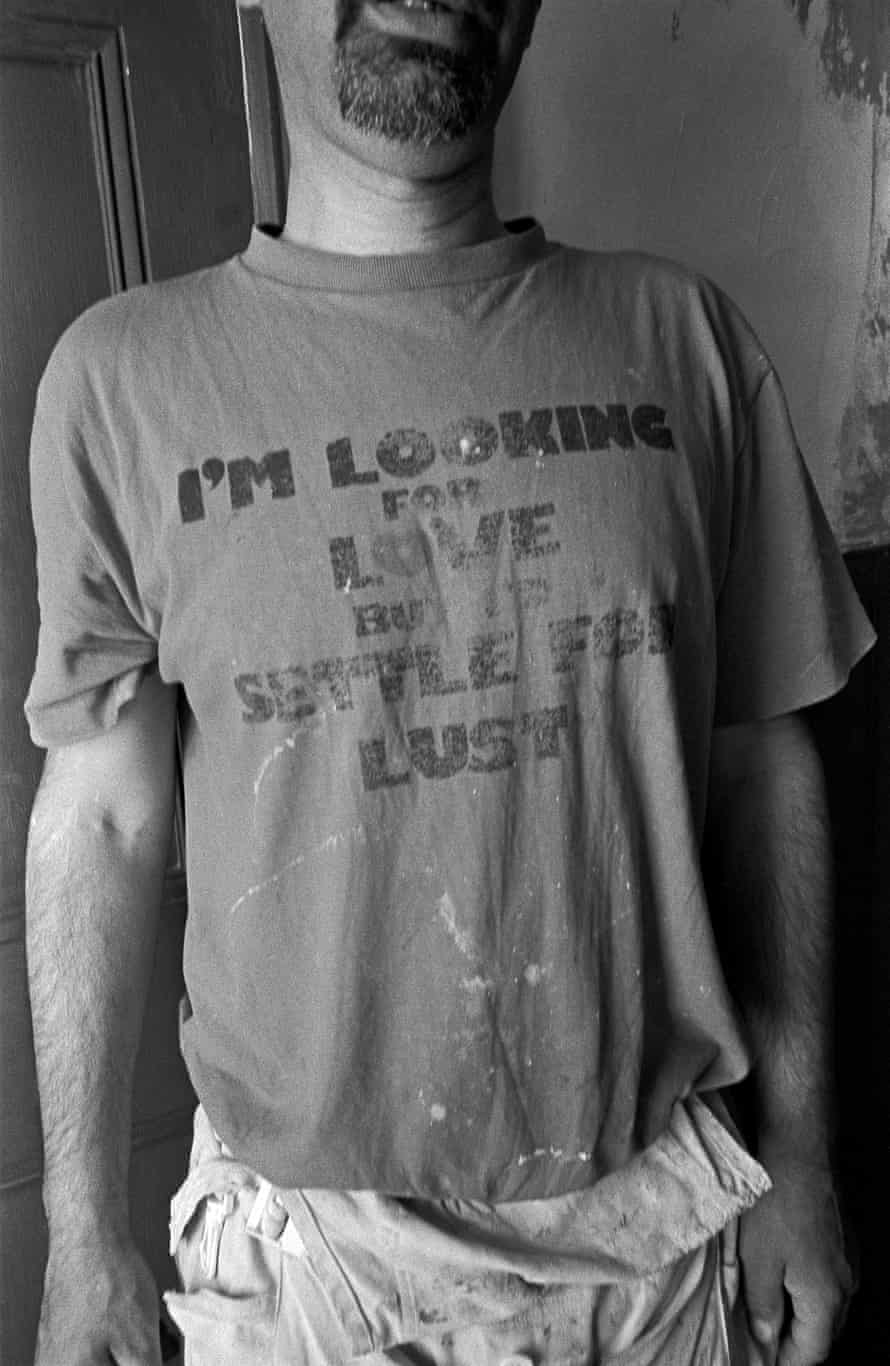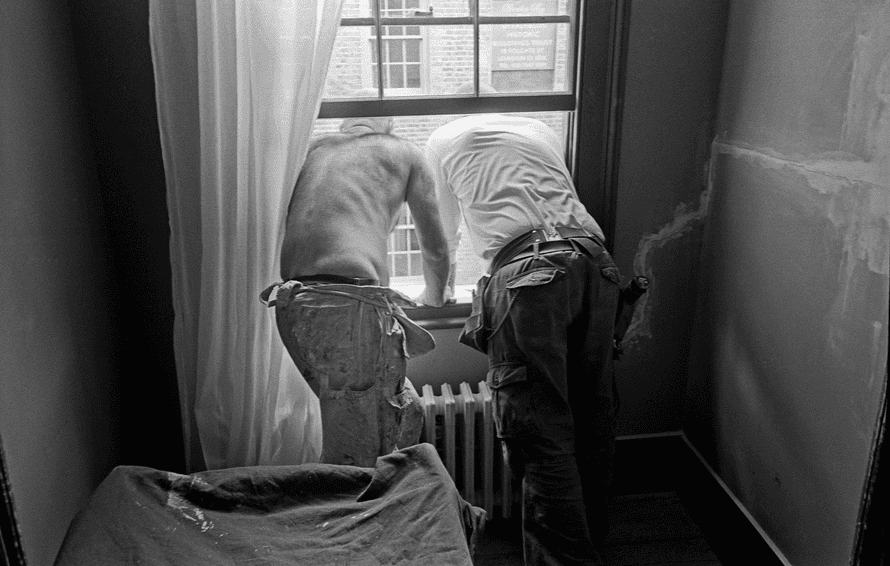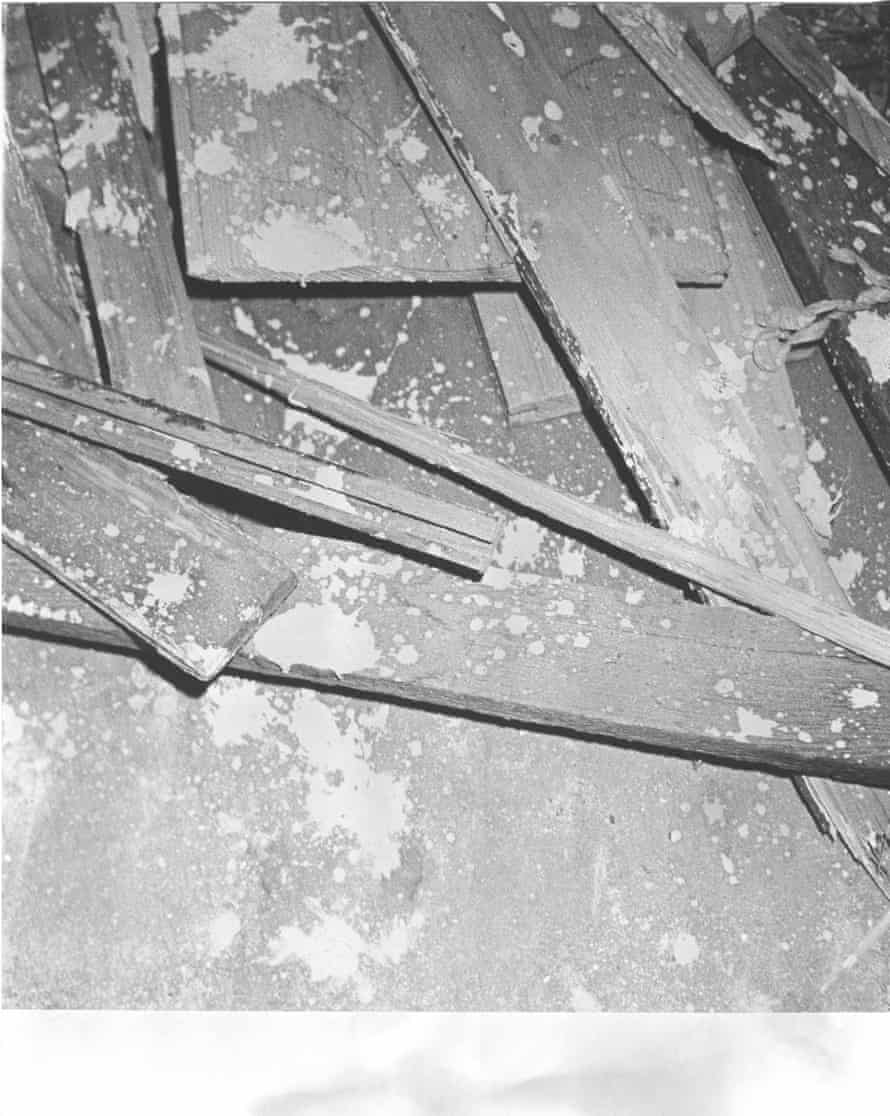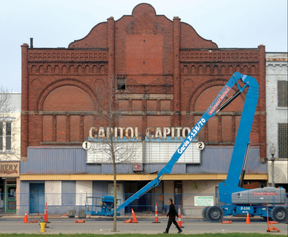‘You get filthy’ – the photographer who shoots sweaty workmen in constructing web pages | Images

David O’Mara is reminiscing about the position that begun it all. “A household mate realized someone who had a portray corporation and they reported, ‘Oh, you’ve been to art school, you will be all proper!’” He laughs. “But I hadn’t touched a paintbrush in several years. I was into conceptual artwork.”
It was 2001 and O’Mara had just moved from Ireland to London with his girlfriend he’d never ever envisaged functioning on a creating site but he necessary the get the job done and quickly observed he could decide on up the capabilities. He also realised the income was great, considerably improved than in the arts. “I appeared into working in a gallery, but those people careers are difficult to come across and typically they really do not want to pay back you,” he says. “It’s insane. A whole lot of the time, you want a great deal of cultural money even to be regarded as.”
And cultural cash – uncomplicated familiarity with higher-class values and traditions – was a thing he didn’t have, in spite of the art college diploma. Born in 1973 and raised in Waterford, south-east Eire, O’Mara grew up doing the job-class. Getting high-quality art as a result of publications, he analyzed in his household town and then at Dublin’s Nationwide Faculty of Art and Design, the place he turned intrigued in conceptual artwork and the situationists, the social revolutionaries who influenced Paris’s 1968 protests, and then the punks.

O’Mara bought into found photographs by way of the situationists. Drawing on their thoughts about urbanism and the proliferation of pictures less than consumerism, he walked the streets of Dublin seeking for deserted photographs and negatives. When he bought to London he ongoing the apply, walking to function and again to lookup for lost pictures. He also got into the behavior of carrying a digicam and using his personal pictures, and inevitably started taking pictures at perform.
“When I started portray and decorating, I was pretty intimidated by the surroundings, but a couple of decades in I was substantially more relaxed,” he states. “I knew everybody all over me, and I constantly experienced my camera, so I just started off using images. No a person experienced a problem with it, even though sometimes they took the piss. They were being my mates – we labored alongside one another, we had a laugh alongside one another. It can be a great deal of enjoyment on web-site, there is a ton of autonomy compared with doing the job in an business.”
O’Mara’s photos present some of the sheer toil that goes into the sites, with pictures of builders tricky at get the job done shovelling or drilling, sparks traveling. But there are also images that seize the surreal nature of getting a location aside and putting it again collectively: a pair of ft dangling from the ceiling, for instance, or gloves jauntily put on a ladder. Some of the visuals clearly show O’Mara’s colleagues giving him the two-fingered salute, or exhibiting him their very own images on their phones, emphasising his private relationship and a feeling of intimacy. Art and handbook labour do not have to be worlds apart, his photographs recommend.
The crews in London are multicultural, typically like immigrants as very well as operating-course Brits. O’Mara has observed an Indian carpenter and Polish bricklayer communicating on a job in German, the one language they had in popular. He’s also come throughout some true figures. His initially boss was a philosophy graduate whose best friend experienced gone awol from the military services and was sleeping under the kitchen desk.
Then there was the electrician who had been expelled from the Jehovah’s Witnesses, and the Polish musician who’d perform his own experimental compositions on site. To O’Mara, this music sounded “like noise” but he appreciated the artistic spark, as well as other folks with fewer obvious aptitude. “Everyone has a heritage and a tale to explain to,” he factors out. “Everyone has interests. It may possibly not be official but everybody appreciates about anything.”

O’Mara ongoing to go after his artwork, portray and decorating 5 times a 7 days, then shelling out Saturday in the darkroom printing his possess images. In the early 2000s he staged a significant exhibition he funded by putting in “seven times a 7 days on the sites”. The photos have been mounted on aluminium, which he then had to heft about every time he moved property. “I assumed, ‘There has to be an simpler way!’” he laughs and, remembering his first adore of artwork guides, resolved to publish a journal.
Identified as Detritus, his magazine was printed on newsprint to continue to keep expenses down and make it easy to give away. By 2012 O’Mara was also placing jointly handmade publications of his photographs: a single-offs or just a handful at a time, printed on papers he observed in the street and housed in boxes or suitcases he uncovered in skips. He developed his most recent handmade e book a number of months in the past, printing it on decorator’s lining paper and supplying the address a swipe of house paint. Called Spit and Sawdust, it is an version of just five copies, priced at £200 each.
O’Mara claims he’s terrible at internet marketing, and promptly weary of trying to push himself on the London gallery scene. “Hideous,” he calls it. “Going to exhibition openings and making an attempt to network designed me paranoid.”. But he managed to get noticed on his possess terms. He set up an Instagram account, @detrituszine, in 2017 and swiftly commenced to bring in photography curators and publishers. He began marketing his handmade textbooks by way of Photobookstore in 2019 after assembly its operator at a photobook festival.

In 2019 he unveiled his first e-book with a publisher, If you can piss … (the title derived from the creating internet site epithet: “If you can piss, you can paint”), with Jannuzzi Smith Editions. This 12 months he will release yet another e-book, In Situ, with “small, punky outfit” Salt n Pepper Press. He decided to do the job with publishers, he states, because guide labour is rarely revealed in pictures, enable alone taken by the folks who do it.
“Photography is a center-course ghetto,” he claims. “There’s not a great deal of illustration of the performing class in photography, and I truly loathe poverty porn – bleeding-coronary heart, center course liberals getting the operating class as a subject. At the time I experienced begun accumulating a physique of images, I experimented with to imagine of equal assignments and I couldn’t. So I assumed it was anything worthy of carrying out.”
For O’Mara this absence of illustration links with a wider malaise and erasure of performing-course lives and labour. The standard route of learning a trade or craft has been devalued, he suggests, as has nursing, or even teaching guide do the job is now observed as “dirty”. This erasure is fairly literal on making websites, in which the aim is to paint yourself out of the doorway, then go. “You’re generating every little thing pristine,” he claims. “When you go away it shouldn’t search like you have been there.”
For O’Mara images is a way to maintain that labour, as nicely as the filth that goes with it he often works by using black-and-white film, partly for the reason that it’s cheaper, partly for the reason that it can deal with the various mild on web site, but also due to the fact it reveals up the grime. “Dirt is a big aspect of the perform,” he suggests, laughing. “You do get sweaty and filthy. My career is actual physical and I appreciate that facet of it, just as I love the actual physical aspect of printing photos.”







